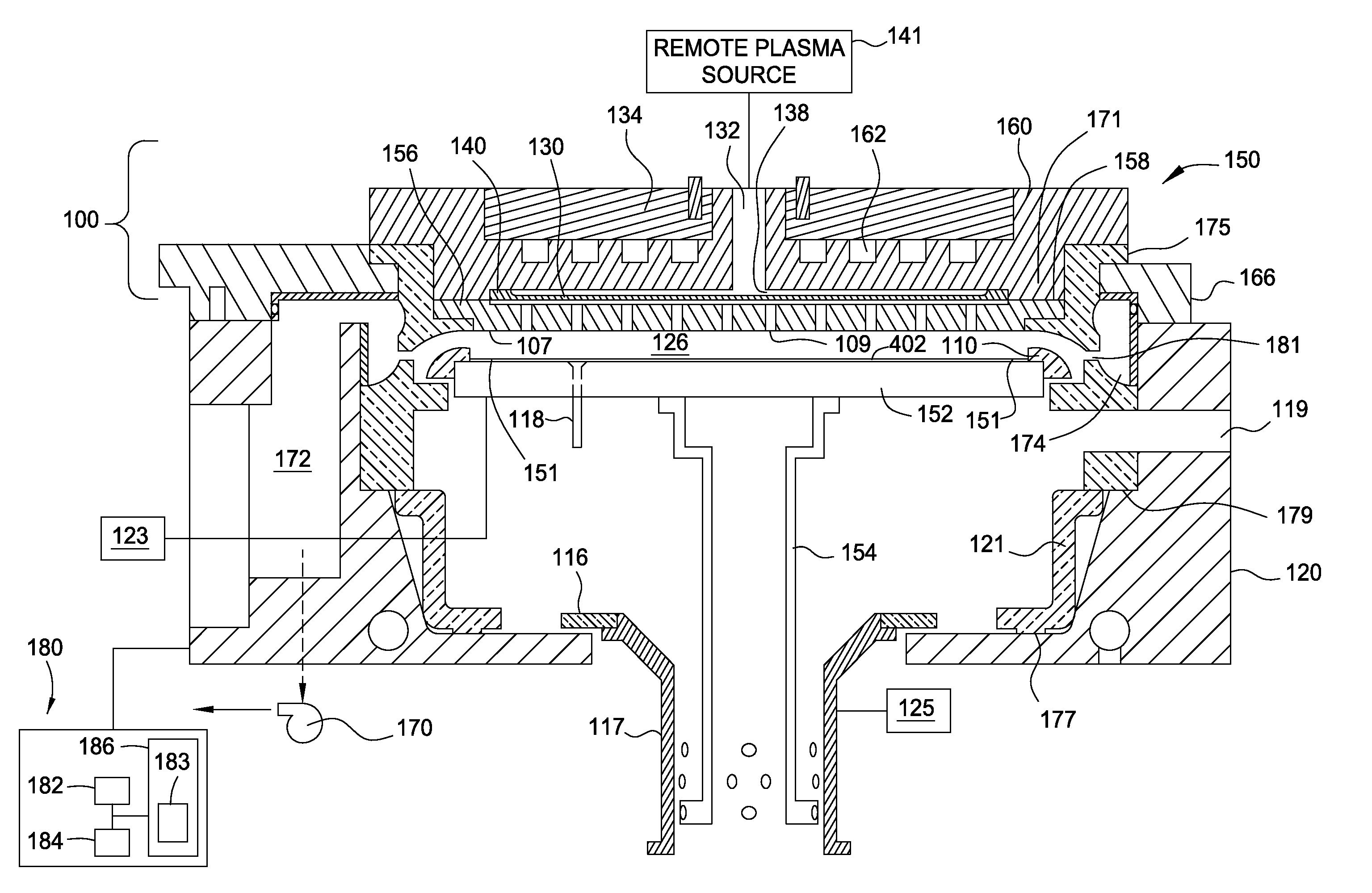Method of enabling seamless cobalt gap-fill
a cobalt gap and cobalt technology, applied in the direction of semiconductor/solid-state device details, chemical vapor deposition coating, coating, etc., can solve the problems of device shorting or poor interconnection formation, poor adhesion, and poor step coverage of metal layer deposited using a conventional pvd process
- Summary
- Abstract
- Description
- Claims
- Application Information
AI Technical Summary
Benefits of technology
Problems solved by technology
Method used
Image
Examples
Embodiment Construction
[0024]The increase in transistor density combined with the shrinking technology nodes (≦11 nm) of advanced CMOS transistors has resulted in decrease in the cross-section dimensions of conducting metal layers utilized during semiconductor manufacturing. Examples of such metal conducting layers include metal contact fill, metal gate fill and interconnect fill, Very narrow cross-section dimensions (2 nm) high resistivity barrier layers. Gap-fill methods utilizing CVD cobalt processes provides a potential low contact resistance (Rc) one-material solution for gap-fill. The CVD cobalt films are required to have conformal step coverage and low roughness. Certain implementations described herein demonstrate a process to fill conducting layer holes or trenches of a semiconductor device with no seam formation.
[0025]In some implementations, the purity of the cobalt film was found to govern cobalt seamless fill. The atomic % of carbon, nitrogen & oxygen impurities in the CVD cobalt film may be ...
PUM
| Property | Measurement | Unit |
|---|---|---|
| pressure | aaaaa | aaaaa |
| temperature | aaaaa | aaaaa |
| temperature | aaaaa | aaaaa |
Abstract
Description
Claims
Application Information
 Login to View More
Login to View More - R&D
- Intellectual Property
- Life Sciences
- Materials
- Tech Scout
- Unparalleled Data Quality
- Higher Quality Content
- 60% Fewer Hallucinations
Browse by: Latest US Patents, China's latest patents, Technical Efficacy Thesaurus, Application Domain, Technology Topic, Popular Technical Reports.
© 2025 PatSnap. All rights reserved.Legal|Privacy policy|Modern Slavery Act Transparency Statement|Sitemap|About US| Contact US: help@patsnap.com



